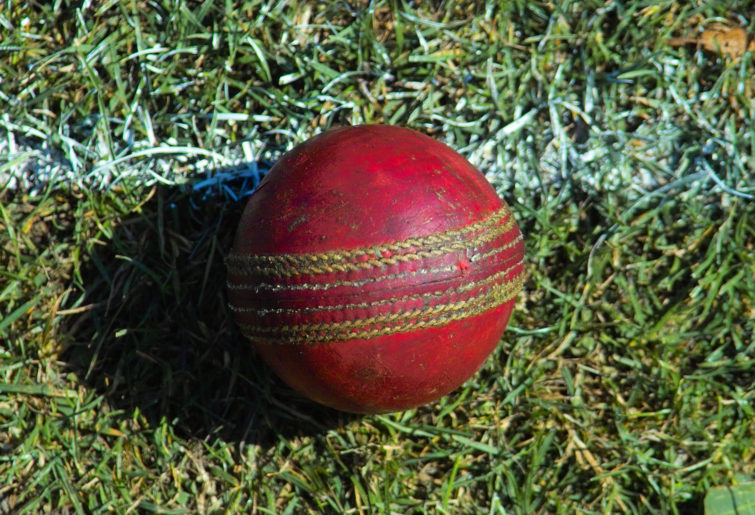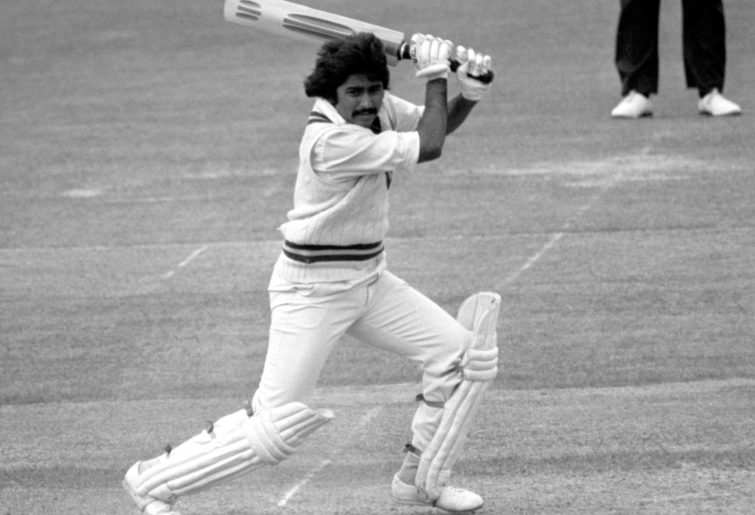Test cricket in the 1980s saw almost total dominance by the West Indies team with Imran Khan’s Pakistan providing the only meaningful challenge.
NZ emerged as a major force while the traditional powers England and Australia struggled to perform consistently. India were stuck with the safety-first approach while the new boys Sri Lanka were just making their presence felt.
The bowling was dominated by the quickies with Abdul Qadir the only spinner to perform consistently. There were some fine efforts from the batsmen, and here in this two-part article I would look at the ten best efforts.
I have followed some criteria. I have given greater importance to the situation of the match, the quality of the opposition bowling and the condition of the wicket rather than the runs scored. My list will include only two double hundreds.
As a rule, I haven’t included the same batsman more than once, although some like Viv Richards, Allan Border and Javed Miandad played a number of memorable innings during the decade.
And finally, I have tried to represent as many Test-playing nations as possible, and at the end only Sri Lanka missed out on my list.
I will start the list in reverse order.

(Wiki Creative Commons, CC BY-SA 3.0)
10. Andrew Hilditch (Australia) – 113 versus the West Indies, MCG, 1984
In the Boxing Day Test at the MCG back in 1981, Australia – inspired by Kim Hughes and Dennis Lillee – had defeated the West Indies in memorable fashion. Astonishingly, going in to this MCG match, the Windies hadn’t lost a Test since then.
In fact, they were looking for their 12th straight win, and for the most part they looked favourites to win.
The Australian captain won the toss and boldly put the opposition in. The West Indies at one stage were 5-154, but Viv Richards with an effortless 208 took the score to 479. The great Richards was having a lean period for his high standards, and there was some criticism of his technique, especially against Geoff Lawson.
Well, he answered his critics in an emphatic manner.
As Australia started their reply, Joel Garner trapped Graeme Wood LBW for 12 – the usual service had resumed, everyone thought. But Hilditch, the recalled opener, and Kepler Wessels shared a second-wicket stand of 123.
Malcolm Marshall ran through the lower order to take 5-86 but the Australian team just managed to avoid the follow-on, scoring 296.
Still, when the Windies declared early on the fifth morning setting a target of 370, only one result looked possible.
For most part of the series, the Australian top order had struggled against the pace of Malcolm Marshall and Micheal Holding. But here, for a change, it was the big bird Joel Garner who emerged as the big threat. The home side slumped to 3-17.
As the Australian batting line-up seemed hapless against the hostile bowling, they found an unlikely hero in veteran South Australian opener Andrew Hilditch.
He started the recovery by sharing a century stand with skipper Allan Border, and although wickets kept falling at the other end, he kept one end going and completed his first ever Test century. He scored 113 before he was surprisingly dismissed by the gentle off spin of Larry Gomes. But by then the home side were almost safe and at the end they finished on 8-198.
9. Gundappa Vishwanath (India) – 114 versus Australia, MCG, 1981
I followed this game thoroughly over the Indian radio, and just as Vishy completed his hundred, the Indian commentator reminded everyone that India never loses a Test when Vishy scores a hundred.
Two things helped Vishy on the opening day. First, the long Indian batting line-up where everyone except the number 11 Dilip Doshi could bat a bit. Second, the strange team selection by the Australians. They picked two spinners and still Greg Chappell after winning the toss put the opposition in.
The pace attack of Dennis Lillee and Len Pascoe did their best, restricting the tourists to 6-115. But as they got tired in the summer heat, Vishy led a superb counter attack. Neither the pacers nor the spinners had any effect on him.
Syed Kirmani (25) and Shivlal Yadav (20) gave him valuable support. But the most interesting was the eight-wicket stand of 26 with the pacer Karsan Ghavri. The partnership ended with Ghavri being run out for a duck.
The rest of the match became a topsy-turvy affair. An Allan Border century saw Australia take a 182-run lead, but then India fought back with the openers putting on 165 runs before Lillee dismissed Sunil Gavaskar in dramatic fashion. Still, the final target was 143 runs. But Kapil Dev took 5-28 to bowl Australia out for 83. Vishy’s record remained intact.
8. Javed Miandad (Pakistan) – 102 versus the West Indies, Port of Spain, 1988
I also considered his 260 at the Oval in 1987 for the list, but given the strength of the opposition bowling and the situation of the match, this was Javed’s finest effort of the decade.

(Photo by S&G/PA Images via Getty Images)
Miandad came in to this Test in fine form. His century, combined with hostile bowling by Imran, had led the Pakistanis to a famous victory in the first Test at Georgetown – the Windies’ first home defeat for a decade.
Here, in the famous Queen’s Park Oval, the tourists took the early initiative. Batting first the West Indies were bowled out for 174. But then Malcolm Marshall restricted the tourists to only a 20-run lead. The West Indies scored 391 to set up a target of 372 for the Pakistan side. No one gave the tourists any chance.
They were quickly restricted to 3-67, but Javed was a rock. He was determined to lead a Pakistan fight-back. With help from the middle order, he reached a fine hundred. He also kept the chances of a famous victory for his side intact. And it was only his dismissal that ended Pakistan’s hopes.
The match ended in a draw with Pakistan finishing on 9-341.
7. Viv Richards (West Indies) – 123 versus Pakistan, Port of Spain, 1988
I can form a list of ten memorable innings by Viv Richards alone. But I chose this one because outside the West Indies team, the Pakistanis possessed the strongest bowling attack at the time. And back in the 1986 series in the sub-continent, Viv didn’t have everything going his way.
He had missed the first Test due to injury. Here, on the opening day, he looked at his majestic best as he raced to 49 from 45 balls. But Abdul Qadir, the wily fox, had the last laugh as he dismissed him.
Richards was determined to make amends in the second innings. Coming in to bat with the match in the balance, he started cautiously. With Imran, Wasim Akram and Qadir, there was both quality and variation in Pakistan’s bowling. But, once in, he seemed in complete control.
At the end his 123 came from just 169 balls to give the home side the upper hand. The game eventually ended in an exciting draw. Interestingly, Richards took 2-17 with the ball on the final day and he was the man of the match.

(S&G/PA Images via Getty Images)
6. Jeremy Coney (NZ) – 111 not out versus Pakistan, Dunedin, 1985
Given that the Kiwis had their golden era in Test cricket during the ’80s by reaching new heights, it is appropriate that one NZ effort is mentioned in this article. There were some fine innings by Martin Crowe, and I also thought about Mark Greatbatch’s heroics at the WACA in 1989. But in the end, I selected this one.
In their first innings, the Pakistanis collapsed from 2-241 to 274 all out. Richard Hadlee took 6-51. But Pakistan fought back thanks to a young left-arm quickie named Wasim Akram. His ability to generate great pace from a fairly short run-up surprised the Kiwi batsmen. He took 5-56 as the Kiwis were restricted to 220.
Pakistan only managed 223 despite Qasim Umar’s 89, but still the Kiwis’ target was 278. This was very formidable in seamer-friendly conditions.
Again Akram emerged as the main threat, and in no time he had the home side struggling at 4-23. At this stage, Coney joined Martin Crowe. The 157-run fifth-wicket stand brought the home side back in the match. But Crowe fell for 84, and then Azeem Hafeez – a more-than-capable left-armer himself – bowled Hadlee.
When Akram returned to dismiss Ian Smith, it looked like the tail would collapse against his pace. Indeed, two minutes later Chris Cairns retired hurt, and it was unlikely that he would bat again. At 8-228 it seemed a lost cause for the Kiwis.
Ewen Chatfield, the last man, was an old-fashioned number 11. He ended his Test career with a batting average of 8.71.
But here he scored a career best 21 not out as the last-wicket pair put on 50 runs to ensure a famous victory for the hosts. Chatfield was stubborn and the experienced Coney at the other end guided him superbly.
Wasim Akram with ten wickets was the man of the match, but it was Coney’s 111 not out that made the difference between the two sides.































































































